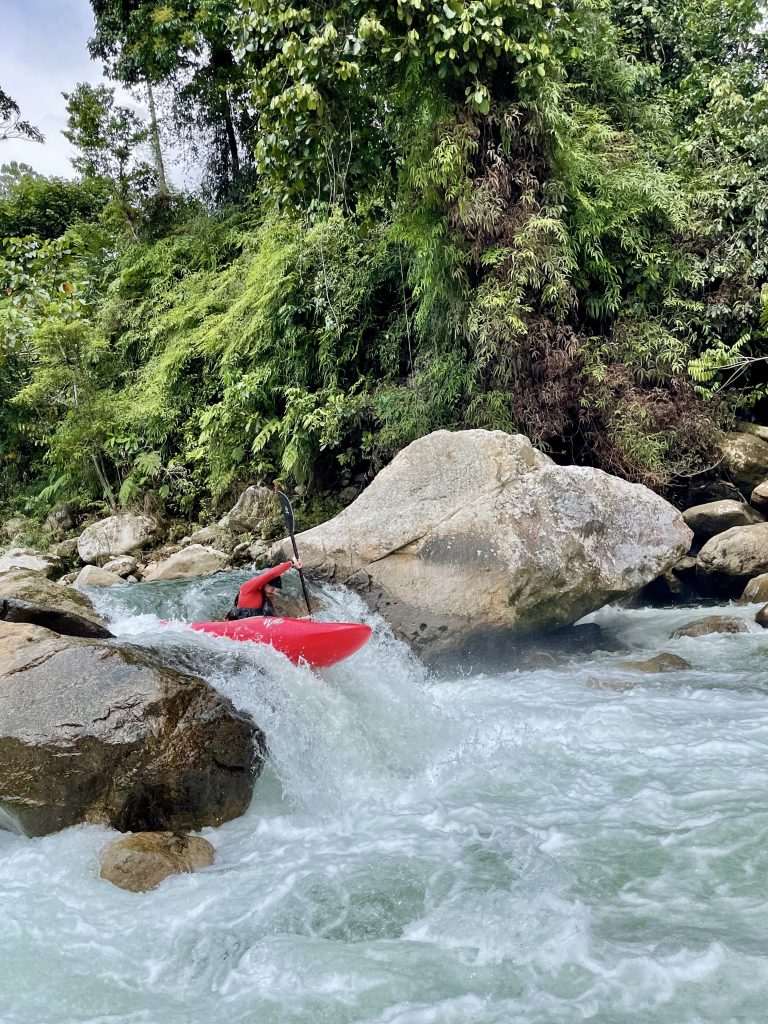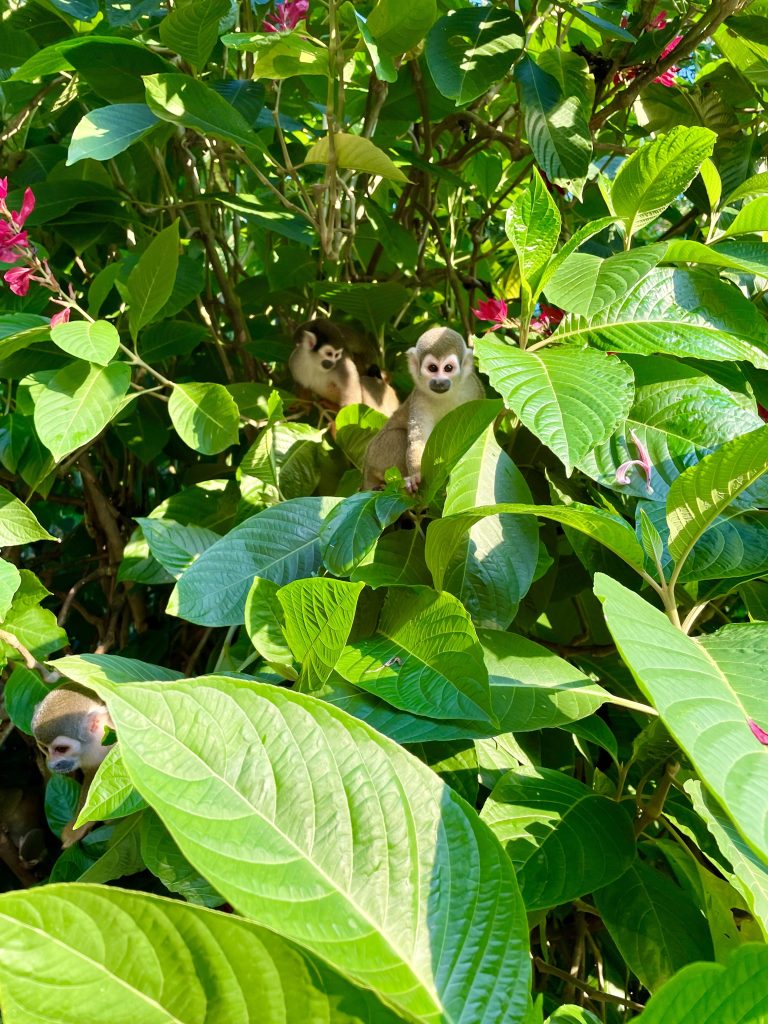ECUADOR
Ecuador was first thrust onto the world scene in 1531 when Francisco Pizarro and his Conquistadors arrived on their search for gold and world domination. Ecuador again gained fame when naturalist Charles Darwin visited the Galapagos Islands in the 1830’s during his historic journey on the Beagle. But it wasn’t until the 1993 that this Andean country became known as a kayaking destination after Larry Vermeeren arrived in search for the rumored hidden whitewater. He started Small World Adventures and Ecuador’s golden age of kayaking began. The Conquistadors never found their “El Dorado” but come boat with us in Ecuador and you’ll know you’ve found the real hidden treasure.
Straddling the equator on the western tip of South America, Ecuador is a land of dramatic landscapes both geographically and historically. Throughout the country, the influences of Indigenous cultures and Spanish Conquistadors still linger and in the villages traditional hunting and fishing are still practiced. With an area about the size of Colorado, Ecuador supports ecosystems so diverse and close together that a traveler can go from a Pacific beach to a snow capped volcano rising over 20,000 feet, and on to the Amazon basin the same day.
Ecuador’s location, unique geographic features, and 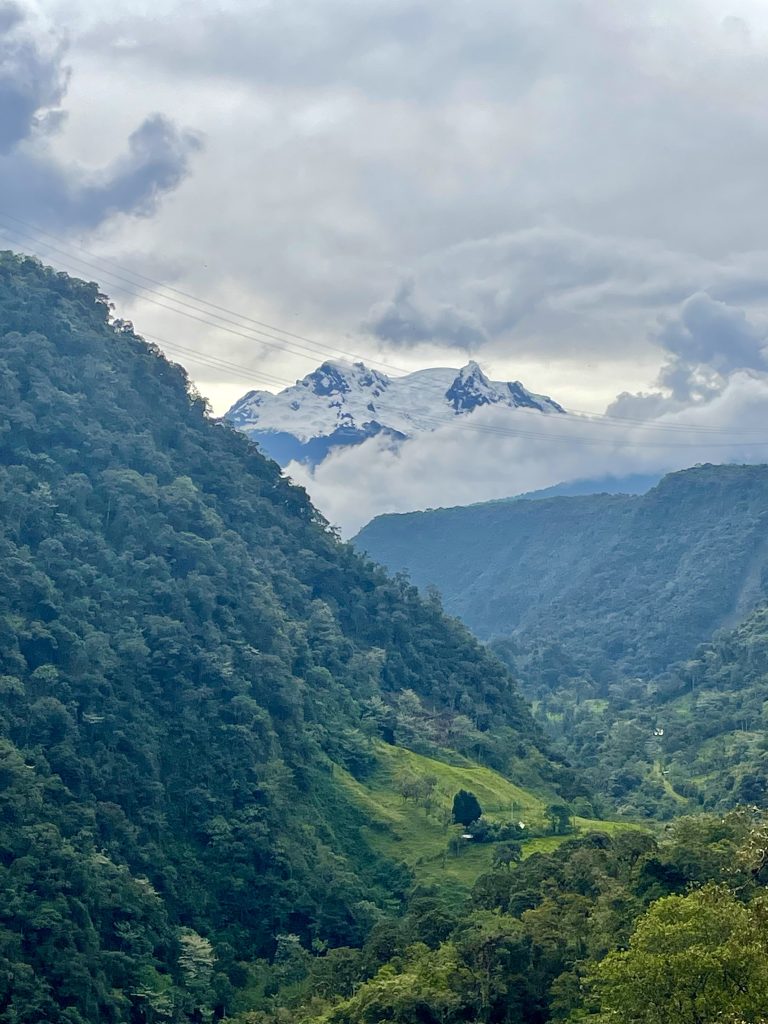 microclimates have made it one of the most biodiverse regions on earth. In fact, it’s one of the 17 “mega diverse” countries in the world. Twenty-four tropical life zones can be found here, as well as 1,640 species of birds, 25,000 species of trees, and over 4,500 species of butterflies. In just the Andean region of Ecuador, 2,725 species of orchids have been recorded, and in the lowlands, one hectare can contain more frog species than are found in all of North America. What is our favorite way to see this amazing country? On a river of course. Whitewater rivers are our pathways through lush jungles and cloud forests – they take us off the beaten path and enable us to experience things not available to the conventional traveler.
microclimates have made it one of the most biodiverse regions on earth. In fact, it’s one of the 17 “mega diverse” countries in the world. Twenty-four tropical life zones can be found here, as well as 1,640 species of birds, 25,000 species of trees, and over 4,500 species of butterflies. In just the Andean region of Ecuador, 2,725 species of orchids have been recorded, and in the lowlands, one hectare can contain more frog species than are found in all of North America. What is our favorite way to see this amazing country? On a river of course. Whitewater rivers are our pathways through lush jungles and cloud forests – they take us off the beaten path and enable us to experience things not available to the conventional traveler.
Locals divide mainland Ecuador into three regions: the Costa, Sierra, and Oriente. The Costa is the warm lowlands along the Pacific coast. The Sierra is the spine of the Andes that run from North to South through the middle of the country. The Oriente is the eastern half of Ecuador (Ecuador’s Amazonian basin). Most of Ecuador’s 14 million people live in the Sierra or Costa, leaving the Oriente sparsely inhabited (as of 2023, only 3% of Ecuador’s population live in the Oriente). The Oriente is also where most of Ecuador’s best whitewater can be found. There are steep creeks pouring off the Andes that feed into bigger volume runs that eventually flow into the Amazon River. Ecuador truly is a paddler’s paradise with much variety compacted into a very small area.
QUITO
All of Small World Adventures’ trips start out near the new airport which is 1-2 hours (depending on traffic) from the capital city of Quito. From the new airport, it’s just over a 2-hour drive to our base in San Francisco de Borja. Usually our guests arrive Saturday night, spend the night at a hotel near the airport, then we drive out Sunday morning in time for lunch and a boating session. If you arrive a couple days early or have some time at the end of your trip, you may want to go into Quito proper to visit this charming city.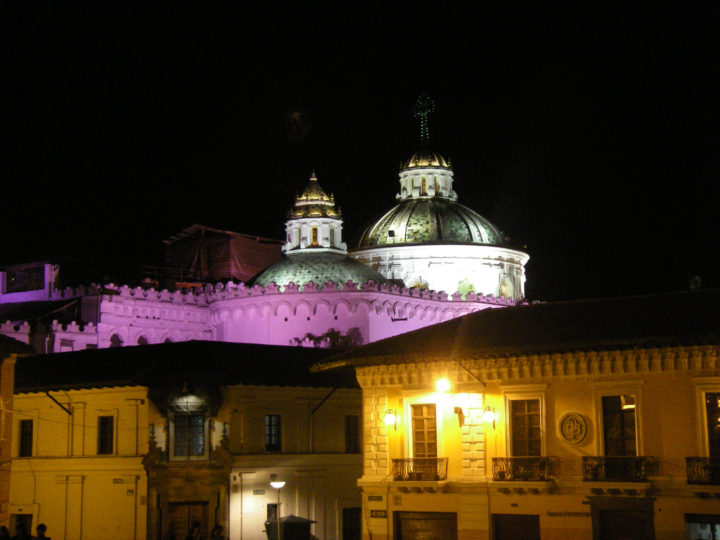
At 9,350 feet (2,850m) you’ll want to wear some sunscreen by day, and break out a jacket at night. Quito is the world’s 2nd highest capital (La Paz, Bolivia being #1), and was the northern capital of the Incan Empire. There are no intact Inca sites in Quito today because the Incas razed the city while fighting the Conquistadors in order to keep it from falling into Spanish hands.The Spanish also made the city their capital and rebuilt atop any remaining Incan ruins. The Spanish built many of their churches and town squares right over the top of important Inca sites to symbolically reinforce their conquest. This Spanish colonial architecture is some of the best preserved in Latin America and the historic center of Old Town Quito is an UNESCO World Heritage Site. Visiting Old Town Quito is especially pretty at night when many of the sites are lit up. Both Old Town and the Mariscal (popular downtown area in New Town) have benefited from recent renovations and tourist development. These areas are safe enough to visit in the evening, but use the same amount of caution you would in any big city.
If you have an extra day or two there are some other attractions in and around Quito. The equator monument (the Mitad del Mundo) is a short taxi ride or an adventuresome bus ride north of the city. (Make sure to check out the real equator a few hundred yards north of the monument – the original French geographic study got it wrong!) In Quito the Museo Nacional del Banco Central del Ecuador (on 12 de Octubre and Patria) is a great museum. People also love visiting the Casa Museo Guayasamin to see the work and home of Ecuador’s most famous artist. Parque el Ejido, directly in front of the museum, is a fun open-air arts and crafts market, especially on weekends. If you aren’t going to the craft town of Otavalo, this park is a fun experience. There are a plethora of bars, cafes, and restaurants to choose from throughout the Mariscal and Old Town. Finally, if the weather is clear, a ride up the flanks of Volcan Pichincha in the Teleferiqo (cable car) gives a great view of the city. If you are free on a Sunday then the city closes down its streets and you can rent a bike to ride some 20 kilometers of city streets in the weekly Cicleo Paseo, there is a real cycling culture developing in Ecuador.
QUIJOS VALLEY
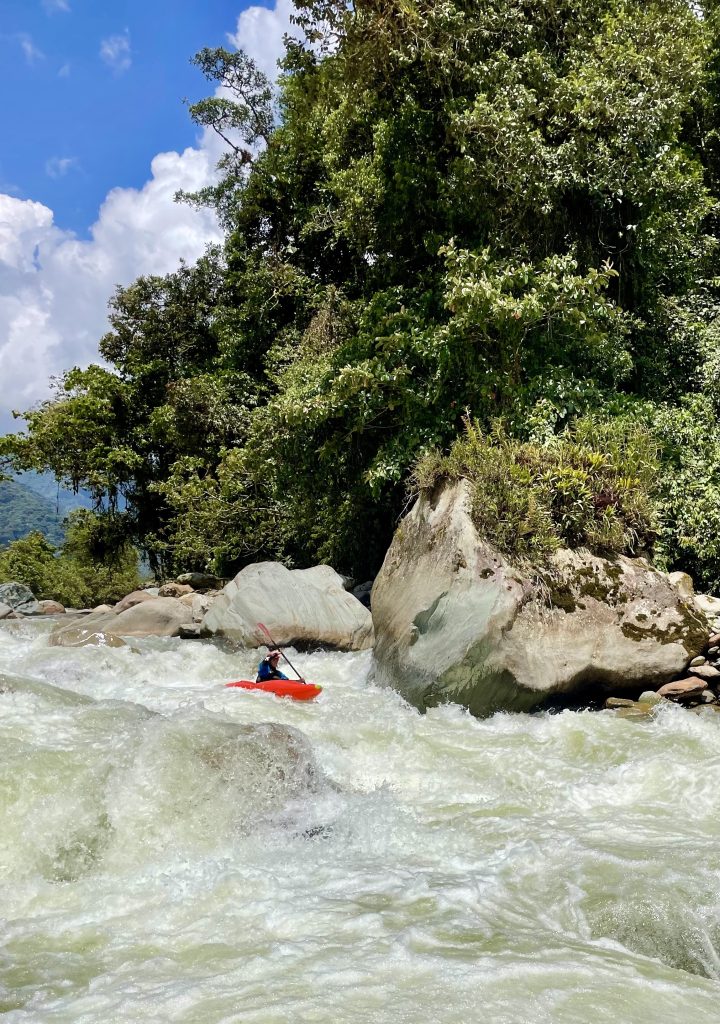 After breakfast Sunday morning, our trips head East over the Andes and into the Oriente. We follow the same path that the Conquistadors used when they “discovered” the Amazon. Driving along the “Avenue of the Volcanoes” on clear days we can see four snow capped peaks–Cotopaxi, Cayembe, Iliniza, and Antisana. The main road to the Oriente tops out at 13,320 feet (4,060m) on top of Papallacta pass. Here we drop into the Amazon basin and can get amazing views of the headwaters of the Quijos River. The area around the town of Papallacta is a geothermal hotspot, and there are some excellent hot springs, but maybe on the way back, we’ve got kayaking to do. This road was built in the 1970’s primarily to access the oil reserves in the Eastern lowlands. The trans Ecuadorian oil pipeline follows the road, and in places you can see it above ground. If we were to continue on, we would eventually reach Texaco’s oil boom town, Lago Agrio, and at the end of the road—Coca — where the pavement ends and transportation continues by dugout canoe.
After breakfast Sunday morning, our trips head East over the Andes and into the Oriente. We follow the same path that the Conquistadors used when they “discovered” the Amazon. Driving along the “Avenue of the Volcanoes” on clear days we can see four snow capped peaks–Cotopaxi, Cayembe, Iliniza, and Antisana. The main road to the Oriente tops out at 13,320 feet (4,060m) on top of Papallacta pass. Here we drop into the Amazon basin and can get amazing views of the headwaters of the Quijos River. The area around the town of Papallacta is a geothermal hotspot, and there are some excellent hot springs, but maybe on the way back, we’ve got kayaking to do. This road was built in the 1970’s primarily to access the oil reserves in the Eastern lowlands. The trans Ecuadorian oil pipeline follows the road, and in places you can see it above ground. If we were to continue on, we would eventually reach Texaco’s oil boom town, Lago Agrio, and at the end of the road—Coca — where the pavement ends and transportation continues by dugout canoe.
There are also plenty of other activities in the Quijos Valley. Consider a trip down to San Rafael falls where the entire Quijos River plunges off a 485 foot tall waterfall. There is also great hiking, horseback riding and bird watching in our area. A few hours down the road lays the town of Coca which is a popular jumping-off point for jungle tours in the magnificent rainforests of Ecuador. If you would like more information about any of these activities, just contact our office and they will help you out. info@smallworldadventures.com
TENA
After a few days enjoying the rivers of the Quijos Valley, we like to get the best of both worlds and travel two hours South to Tena. On our way from the Quijos Valley to Tena we’ll drive over 8,000 foot (2,400m) Guacamayo Pass and then start our descent into the Napo Valley. If it’s a clear day, look for Sumaco–an impressive jungle covered volcano jutting above the surrounding mountains. Here we find warmer water and different birds and animals that accompany the lower elevation 1,600 ft (500m).It’s common to see parrots, marmosets, and monkeys. We stay at the best hotel in Tena (it’s riverside as well), and enjoy air conditioning, hot showers, and a friendly, excellent staff. Tena has a population of 34,000, and is the capital of Napo Province. It was an important trading post in the colonial era, and remains a bustling small town and popular stopping off point for travelers heading into the jungle. Here you can find souvenir shops, internet, good restaurants, bars and a happening nightlife. Many travelers come to Tena just to spend time in town, visit the surrounding jungle, and learn Spanish. We get to go boating, too! The rivers in this area stick with the Ecuadorian theme of being close together, multiple sections of the Jatunyacu, Misahualli, Jondachi, Piatua and more are all right in the back yard.
OFF THE WATER ACTIVITIES
If you have more than one week to visit Ecuador, we can set you up with extra days of kayaking, or you can check out some of the other sights this amazing country has to offer. Top on the list for many is a visit to the Galapagos Islands. The usual way to see the Galapagos is on a 3, 5, or 8 day cruise from island to island (we suggest at least 5 days). Some companies are now offering “land-based” trips, where you sleep onshore and take small boats to visit the nesting areas and snorkeling sites. It’s also possible to visit parts of the islands on your own (there are towns on a couple of the islands) but, as it is probably a once in a lifetime opportunity, do it right and pay a bit more to visit the best areas – you need a guide to visit most of the islands in the national park. Small World Adventures can help you book a trip to the islands, or just give you more information. Contact us and we can get you set up with one of the reputable companies that we work with.

There’s also plenty more to do on the mainland of Ecuador, whether it’s in the highlands, at the beach, or in the jungle. The most famous town for arts and crafts in Ecuador is Otavalo. It’s in the highlands to the north of Quito. The open air market is a bit more elaborate on Saturday mornings, but it’s good any day. There are good places to stay in town, and some very nice haciendas in the surrounding area.
You could easily spend a few days hiking the lake country around Otavalo as well. Mountain climbing is also a popular attraction in Ecuador. Chimborazo at 20,702 ft (6,310m) and Cotopaxi at 19,347ft (5,897m) are the most popular climbs. You can rent gear in Quito if you have mountaineering experience, or you can also hire a guide. You’ll want to have a minimum of three days to acclimate and complete the climb. On our trips we will have seen some pristine jungle and cloud forest, but if you want more exposure, you can go out to one of the jungle lodges in the Eastern lowlands. Guests arrive by plane or motorized canoe, and these lodges on the headwaters of the Amazon can rival the Galapagos for a unique wildlife experience. If you just want to relax, Ecuador has some nice beach towns. Some of our favorite beaches are Canoa, Alandaluz and Montanita. You can do some surfing or just enjoy an icy drink in the shade of a palm tree. Closer to Quito, the town of Banos, the Bella Vista cloud forest, or Papallacta hot springs are great places to unwind. Let us know if you want any more details on adding some more adventure to your trip.
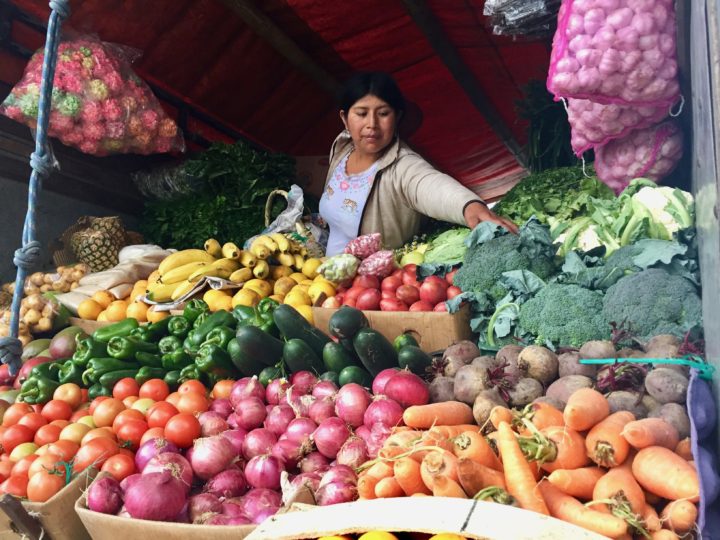
WEATHER
Weather on the equator is more regulated by elevation than by season. It’s always warm on the coast and in the lowlands, and it can be surprisingly cool in the highlands. It snows year-round in the mountains, and can rain up to 500 cm (16.4 feet!) each year in parts of the Oriente. Ecuador is also the only place in the world where the equator passes through snow – on the shoulder of 18,996 foot (5,790m) Cayambe. The temperature in Ecuador varies by altitude and weather conditions. A cloudy day at 6,000 feet (1,800m) near our lodge can be quite chilly, but down at 1,000 feet (300m) near Tena it’s warm on rainy days. Normally it’s sunny for part of the day and rainy for part of the day, but an entire week of sun (or rain) is not uncommon. We’ve yet to find any meteorologists with accurate weather predictions for the Oriente!
KAYAKING SEASON
The rivers in Ecuador are unique in that they run year around and it’s possible to paddle in Ecuador throughout the year. At Small World we schedule our season from November to March to take advantage of the best water levels and to escape from the cold winters in the North. The rivers here are all rain fed, with some snow melt to back things up, and low water is never a problem. Fluctuations can happen at any time, with the only constant being that the weather and river levels change a lot! It tends to rain more in the Oriente in June and July, so the water levels are often too high then. It’s a different concept for all of us kayakers used to running rivers when they are “up” – you don’t need “high” water in the Amazon basin, “high” water can be too much. While things do change often, there is almost always something to boat. We’ve had many seasons where we never missed a day of paddling. We use our years of experience paddling in Ecuador to choose the best run each day for each group depending on water levels.

